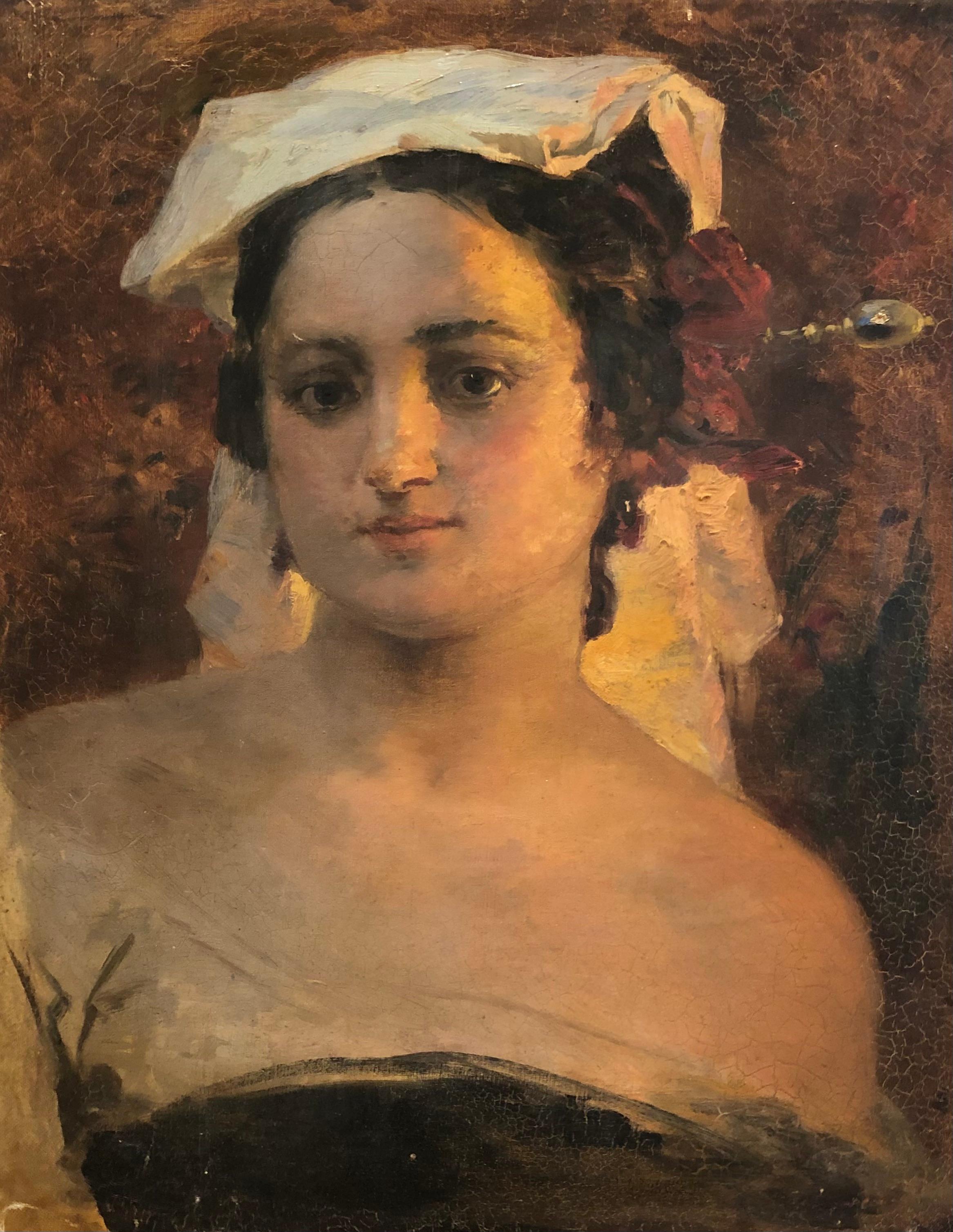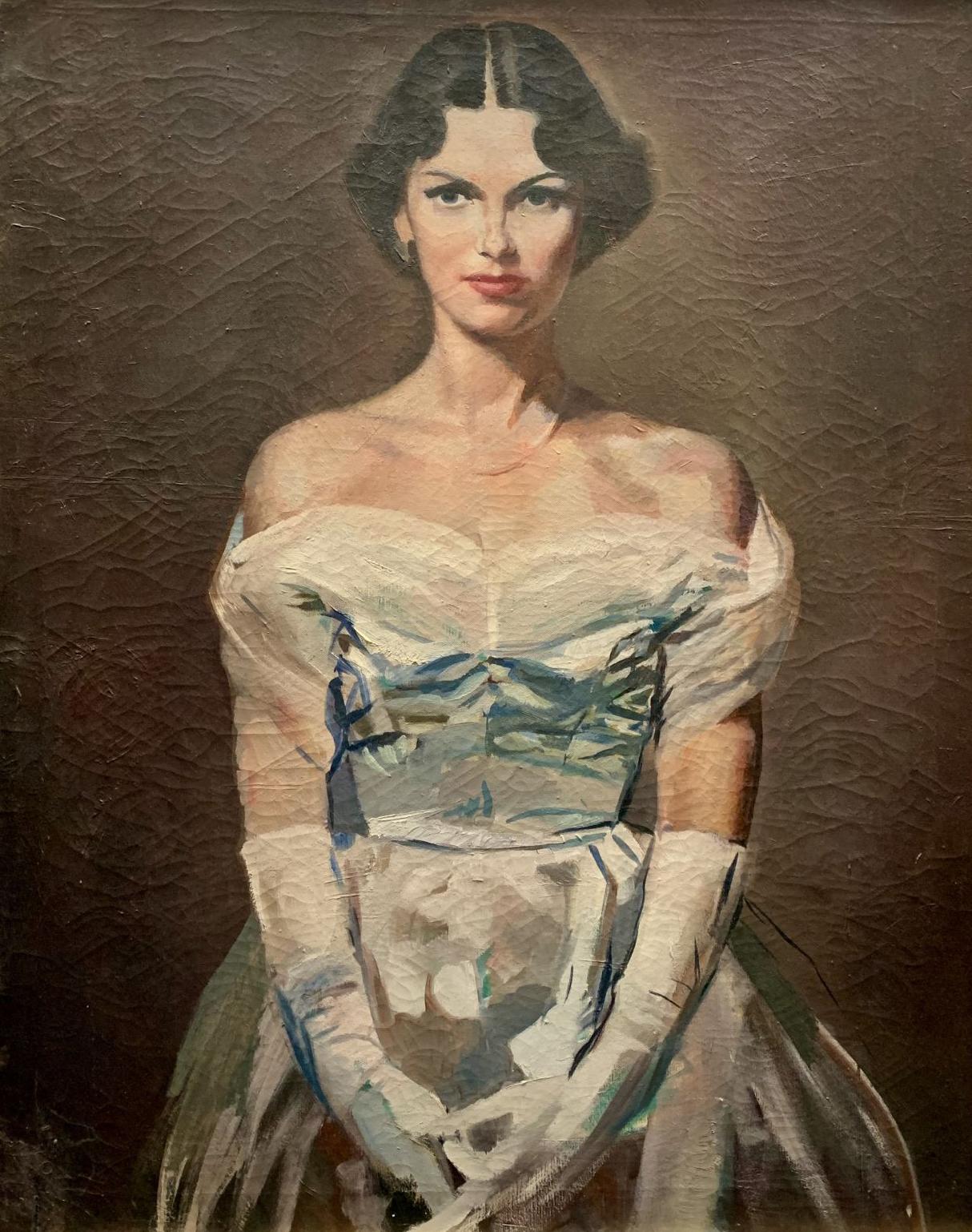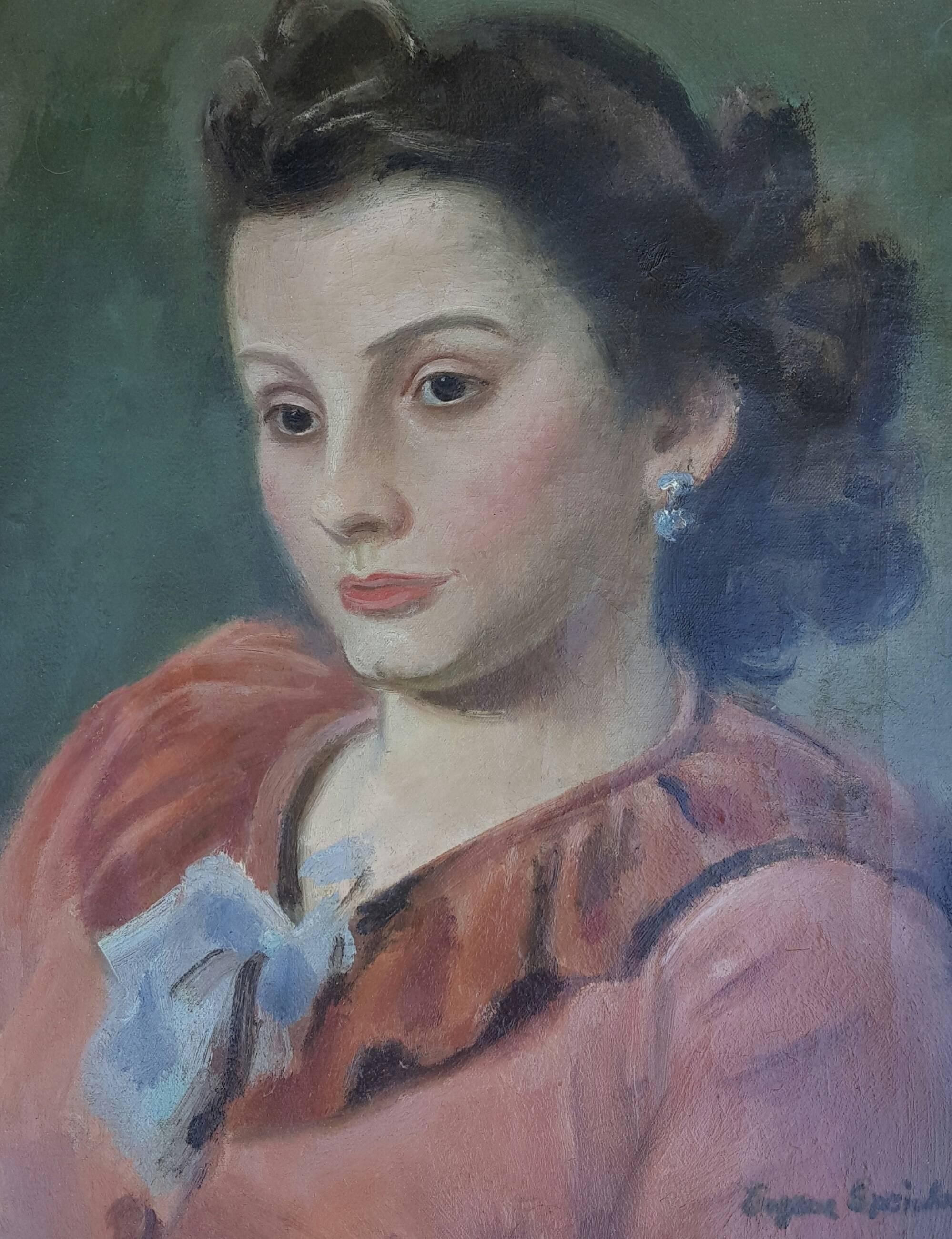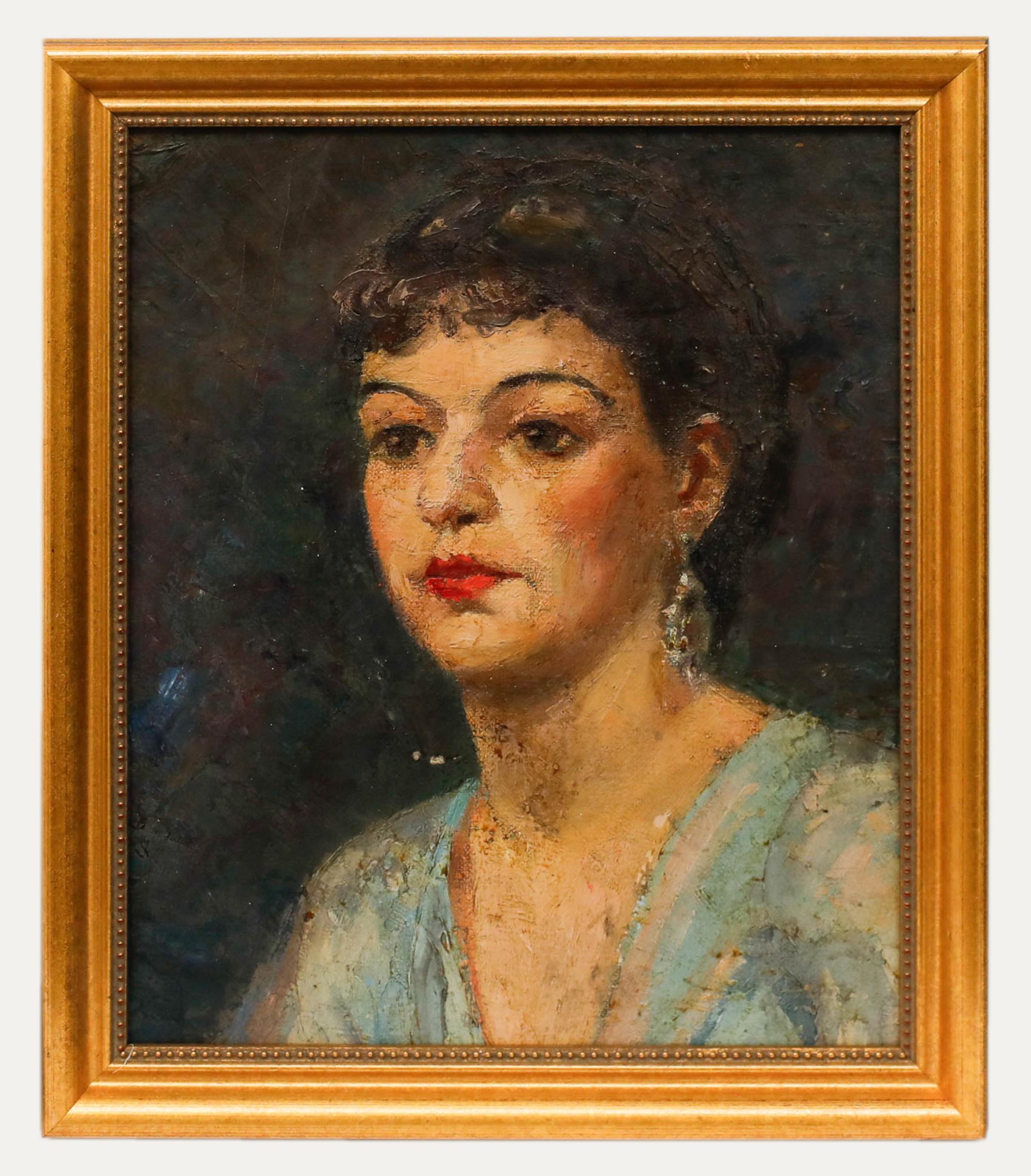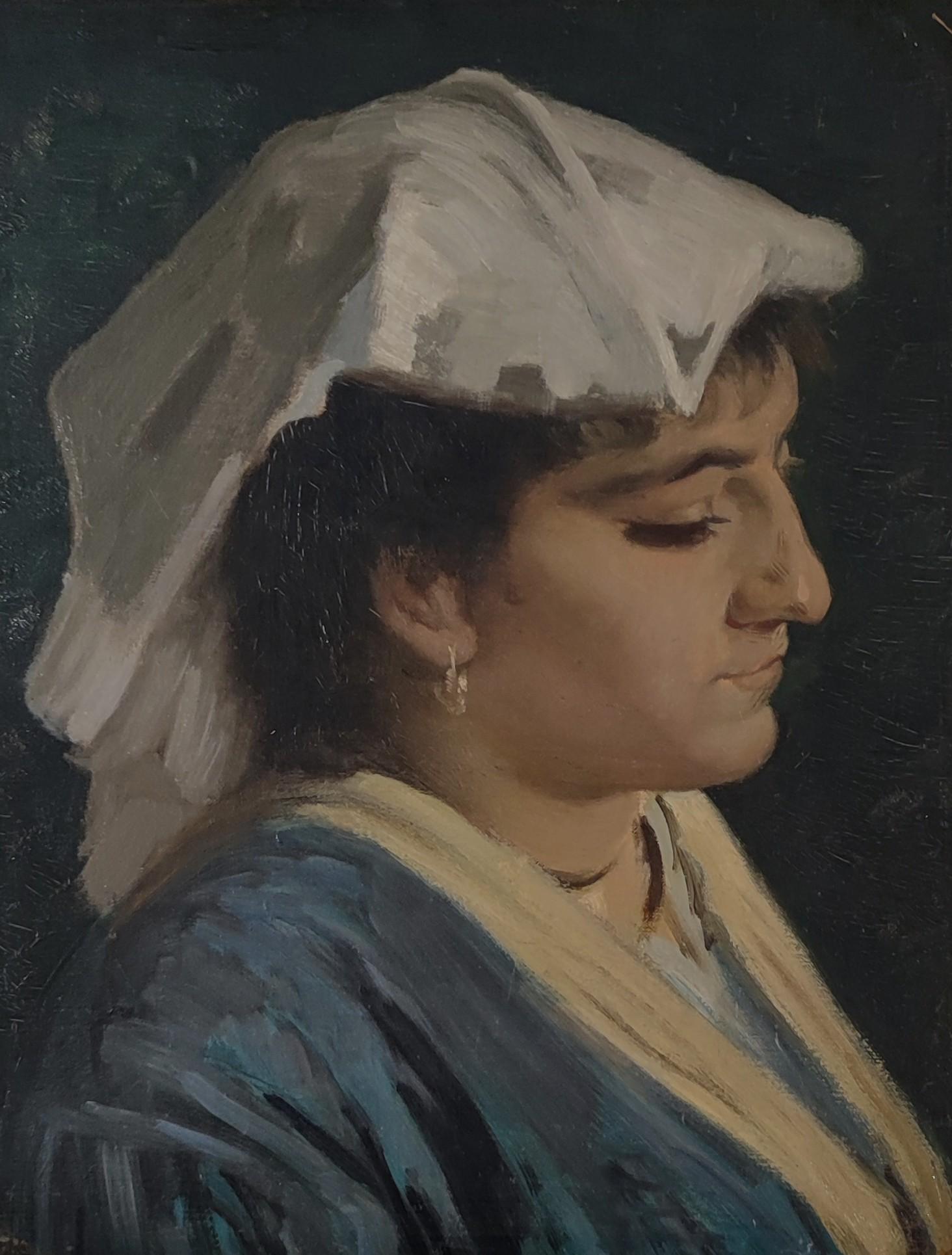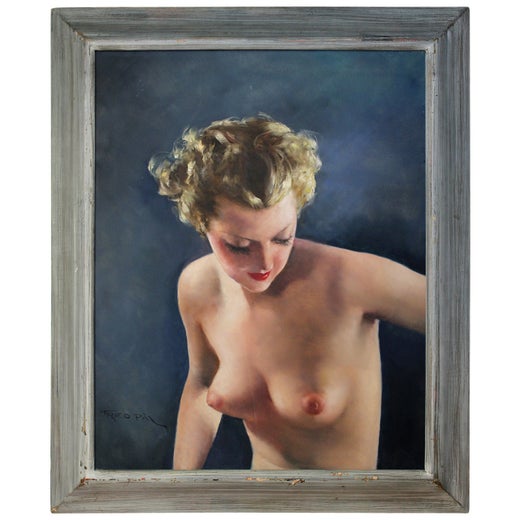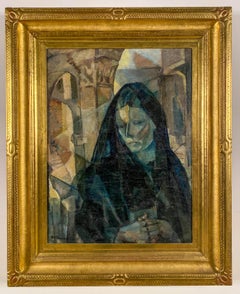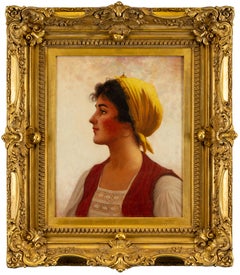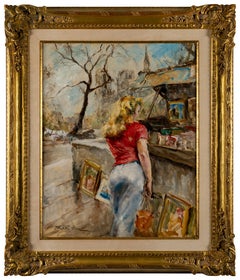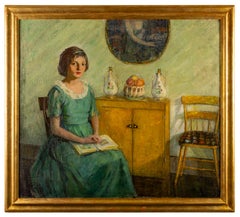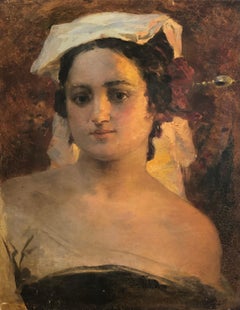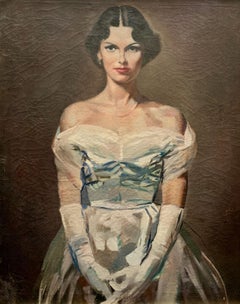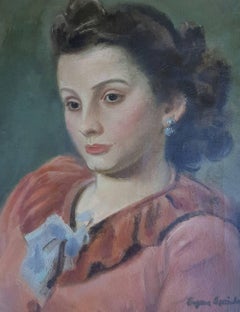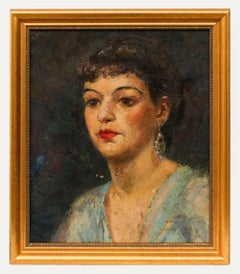Want more images or videos?
Request additional images or videos from the seller
1 of 8
Pal FriedMona Lisa1950
1950
$5,400
£4,079.10
€4,714.28
CA$7,588.45
A$8,437.04
CHF 4,442.62
MX$102,366.73
NOK 56,245.69
SEK 52,576.01
DKK 35,180.65
About the Item
Pal Fried,
Hungarian/American, 1893-1976
Mona Lisa
Oil on canvas
30 by 24 in.W/frame 38 by 32 in.
Signed lower left
Pal was born in Budapest and studied at the Hungarian Academie under Professor Hugo Pohl and in Paris under Claude Monet and Lucien Simone. Under Pohl's influence, he executed many portraits, nudes and Oriental scenes in pastel. He was also greatly influenced by the French Impressionist School of Renoir and Degas. His works are listed in the Fine Arts Book.
Fried's signature on his paintings was Fried Pal, last name first in the European manner. He is sometimes listed in auction catalogues and reference books erroneously under the letter "P".
While traveling in Spain and Africa, Pal Fried widened and enriched his palette, which gave him mastery of light and movement. After returning to Paris, Fried concentrated on portraiture in which he also became a recognized master. He exhibited his work in Muucsarnok in Budapest. In 1947, after WW II, he emigrated to America where he taught at the Academy of Arts in New York and developed his own unique style and technique.
In the 1950's and 60's, Pal Fried gained popularity while living and painting in Hollywood. He made the rounds and often painted high society women and celebrities including Marilyn Monroe and the Gabor sisters. In New York, he painted portraits of Herbert Lehman Governor and Senator from New York, Will Rogers and other notables.
Fried, an artist of the Hungarian school, worked with pastels and oil paints. He was known for being an important figure painter, and most often depicted beautiful young women, nudes, ballerinas, Parisian society women, western scenes, horse racing, and an occasional seascape. His artwork has gained much deserved recognition and notoriety and has become highly collectible. Many of his paintings hung in the famed Haussner Restaurant in Baltimore, Maryland.
Art F455
- Creator:Pal Fried (1893 - 1976, American)
- Creation Year:1950
- Dimensions:Height: 38 in (96.52 cm)Width: 32 in (81.28 cm)Depth: 2 in (5.08 cm)
- Medium:
- Movement & Style:
- Period:
- Condition:
- Gallery Location:Sheffield, MA
- Reference Number:Seller: Art F4551stDibs: LU70035325202
Pal Fried
Pál Fried (16 June 1893 in Hungary – 6 March 1976 in New York City) was a Hungarian artist best known for his eroticized paintings of female dancers and nudes. Pál Fried was born in Budapest in 1893. He received his art education at the Académie hongroise des arts (Hungarian Academy of Arts) where he was a pupil of Hugo Pohl who became one of his major influences. While under Pohl's direction, he executed many portraits of female nudes and Orientalist works. Later he studied in Paris at the Académie Julian, where he was the pupil of Claude Monet and Lucien Simone. In Paris, he was greatly influenced by the French Impressionists, especially Pierre-Auguste Renoir and Edgar Degas. This inspired him to prepare many paintings of ballerinas, dancers and circus performers.Fried emigrated to the United States in 1946 after World War II, where he taught at the New York Academy of Art. He prepared portraits of American celebrities such as Marilyn Monroe. Through his work in portraiture, he gained considerable financial success.He became a U.S. citizen in 1953. He lived in Los Angeles and New York City and died on 6 March, 1976 in New York, NY. He worked in oils and pastels and experimented with light and movement. His oil paintings were usually of dancers, nudes, and portraits, and while his subjects were primarily female, he also painted Paris, seascapes, cowboys and landscapes of the American West as well as Orientalist subject matter. He signed his paintings, as is usual in Hungarian, with his surname first as "Fried Pál". At times, this particular artist would make several, almost identical versions of the same oil painting, except he would use slightly different facial expressions and/or would try different colour schemes.
About the Seller
4.3
Vetted Professional Seller
Every seller passes strict standards for authenticity and reliability
1stDibs seller since 2017
55 sales on 1stDibs
Typical response time: 12 hours
- ShippingRetrieving quote...Shipping from: Sheffield, MA
- Return Policy
Authenticity Guarantee
In the unlikely event there’s an issue with an item’s authenticity, contact us within 1 year for a full refund. DetailsMoney-Back Guarantee
If your item is not as described, is damaged in transit, or does not arrive, contact us within 7 days for a full refund. Details24-Hour Cancellation
You have a 24-hour grace period in which to reconsider your purchase, with no questions asked.Vetted Professional Sellers
Our world-class sellers must adhere to strict standards for service and quality, maintaining the integrity of our listings.Price-Match Guarantee
If you find that a seller listed the same item for a lower price elsewhere, we’ll match it.Trusted Global Delivery
Our best-in-class carrier network provides specialized shipping options worldwide, including custom delivery.More From This Seller
View AllSegovie
Located in Sheffield, MA
Marie Antoinette Boullard-Deve
French, 1890-1970
Segovie
Oil on canvas
29 by 21 ½ in. W/frame 39 by 31 ½ in.
Signed lower left and titled and dated 1951 on the back
Marie was born...
Category
1950s Modern Figurative Paintings
Materials
Oil
Young Beauty
By Walter Blackman
Located in Sheffield, MA
Walter Blackman
American, 1847-1928
Young Beauty
Oil on canvas
20 by 16 in, w/ frame 32 by 28 in
Studied under Gerome, Paris
Exhibited:
Society of American Painters 1878
Paris Sal...
Category
Late 19th Century Naturalistic Portrait Paintings
Materials
Oil
$10,200
Woman Browsing
By Pal Fried
Located in Sheffield, MA
Pal Fried
Hungarian-American, 1893-1976
Woman Browsing
Oil on board
23 ¾ by 29 ¾, w/ frame 34 ½ by 40 ½ in
Signed lower left
Pal was born in Budapest and studied at the Hungarian A...
Category
Mid-20th Century Impressionist Paintings
Materials
Oil
$4,400
The Picture Book
By Pauline Palmer
Located in Sheffield, MA
Pauline Lennards Palmer
American, 1867-1938
The Picture Book
Oil on Canvasboard
32 ¼ by 36 ¼, w/ frame 37 by 41 ¼ in
Signed lower right
Born in McHenry, Illinois, Pauline Palmer became a painter in realist/impressionist style of a wide variety of subjects including landscapes, street and beach scenes, genre, and portraits. She trained at the Art Institute of Chicago, and studied with William Merritt Chase, Kenneth Hayes Miller, and Charles Hawthorne. She also studied in Paris.
She married Dr. Albert...
Category
1930s Impressionist Portrait Paintings
Materials
Oil
At the Masquerade
By Dietz Edzard
Located in Sheffield, MA
Dietz Edzard
German, 1893-1963
At the Masquerade
Oil on canvas
25 ½ by 31 ¾ in, w/ frame 31 ¼ by 37 ½ in
Signed lower right
Dietz Edzard was born in Bremen in 1893 Germany. He trav...
Category
Mid-20th Century Impressionist Paintings
Materials
Oil
Homage to Picasso
Located in Sheffield, MA
Morris Solotaroff
Russian, 1891-1970
Homage to Picasso
Oil on canvas
34 ¾ by 28 ½ in. W/frame 41¾ by 35 ½ in.
Born in Russia on Oct. 1, 1891. Sol...
Category
1930s Modern Figurative Paintings
Materials
Oil
You May Also Like
Young woman
Located in Genève, GE
Work on canvas
Category
19th Century Portrait Paintings
Materials
Oil
$2,347
Portrait of a Woman
By Charles Ellis
Located in Fort Washington, PA
Medium: Oil Painting
Signature: Unsigned
Contact for dimensions.
Category
20th Century Portrait Paintings
Materials
Oil
Portrait of Irene
By Eugene Speicher
Located in Saratoga Springs, NY
Signed lower right.
Eugene Speicher is considered one of the foremost realists of his generation who closely upheld the mantle of his mentor, Robert Henri. His reputation currently...
Category
20th Century Modern Portrait Paintings
Materials
Canvas, Oil
Mid 20th Century Oil - Lady in Evening Wear
Located in Corsham, GB
A charming portrait depicting a woman in fine evening wear. Unsigned. Presented in a gilt frame. On board.
Category
20th Century Portrait Paintings
Materials
Oil
19th Century Genre Painting
Located in San Francisco, CA
Beautiful 19th century oil on canvas. Probably European but not sure. I do not see a signature. Housed in lovely burl wood frame which measures 30 1/4 inches wide by 22 1/2 high. Pai...
Category
19th Century Figurative Paintings
Materials
Oil
Study of a young woman
Located in Genève, GE
Work on canvas
Category
Late 19th Century Portrait Paintings
Materials
Oil
More Ways To Browse
Nude Ballerina
Vintage Ballerina Painting
1950s Horse Painting
Will Rogers
Vintage Lighted Letter Signs
Oil Paintings Marilyn Monroe
Fried Pal
Fried Pal Painting
Oil Portrait Pal Fried
Marilyn Monroe Ballerina
John Everett Millais
La Fosse
Rabuzin Ivan Painting
Rob Alexander
Scottie Wilson
Ted Hughes
Ubud Art
Vladimir Dimitrov
